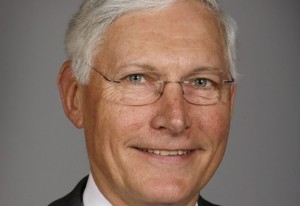Vander Linden Update 3/31/2016
How Iowa’s Ending Balance Has Been Used
With the discussion on the state budget and school aid funding, many Iowans have been asking how the state’s ending balance has been used over the past few years. Often portrayed as a “surplus” by the Democrats and the media, in reality the ending balance is the revenue collected by the state but not spent. Which is why Republicans refer the ending balance as an “overpayment” by the taxpayers. Below is a list of the various ways portions of the Ending Balance have been returned to the taxpayers or used in other ways that help address priorities of Iowans.
Returning it to the taxpayers – During the 2015 and 2016 legislative sessions, IRC coupling bills have been passed. These bills both took funds from the ending balance and returned them to the taxpayers. The amounts were: 2015 (SF 126) – $98.98 million
2016 (HF 2433) – $97.6 million
Taxpayers Trust Fund – Some funds that may have gone into the Ending Balance was deposited into Taxpayers Trust Fund. $60 million dollars was deposited in the Taxpayers Trust Fund in FY 2013 and FY 2014. Taxpayers were returned $84.6 million in FY 2014 and $27.4 million in FY 2015. There is still $8.1 million in the Taxpayers Trust Fund that will also be returned to the taxpayers.
Lower State Tax collections – In the past two years, the revenue forecast for the General Fund has not been met by actual tax collections. In those cases, the Ending Balance is used to fill in the gap between projected revenues and actual revenues. In FY 2015, $127 million of the ending balance was used to fund the difference. It is expected that the amount needed in FY 2016 will be $128.7 million.
Filling the Cash Reserve Fund and the Economic Emergency Fund – By law, the state’s two reserve funds are required to equal 10 percent of the General Fund budget for that particular year. Over the last few years, funds remaining in the ending balance have been used to add to the reserve funds. Here is the amount of funds used to meet the statutory requirement of 10% of the General Fund being held in reserve:
FY 2013 – $21.1 million
FY 2014 – $47.2 million
FY 2015 – $26.8 million
FY 2016 – $22.3 million
Natural Disaster Relief – In 2011, the Legislature decided to have the state’s share of disaster aid payments and state-funded disaster relief (known as Performance of Duty) to be paid annually out of the Economic Emergency Fund. The ending balance would then refill the EEF once the payments have been made. Here are the amounts that have been paid in recent years for Performance of Duty:
FY 2013 – $26.15 million
FY 2014 – $15.8 million
FY 2015 – $32.7 million
FY 2016 – payment has yet to be made
Paying off state debt – During the 2013 legislative session, the General Assembly took a portion of the ending balance – $113.8 million – and used that money to pay off four series of bonds issued by the State. The bonds were:
Honey Creek Premier Destination Park Bonds
2002 Prison Infrastructure Revenue Bonds;
2010 Taxable I-Jobs Bonds;
School Infrastructure Bonds.
Making Strategic, One-time Investments in Iowa –
During the 2013 and 2015 legislative sessions, the General Assembly also took part of the ending balance for one-time investments. In 2013, the amount spent on these was $64.5 million on economic development initiatives, completing various infrastructure projects at the Dept. of Corrections and the Board of Regents, and assisting UNI. In 2015, the amount spent was $57 million, with $43 million of this to supplement the Medicaid program. Additional resources were spent on radio communications equipment for the Department of Public Safety, a one-time peak of commercial and industrial property tax replacement claims, and mental health services.
Initial Investment into the State’s Water Quality Initiative – In 2013, the Legislature made a substantial investment in the Water Quality initiative established by the Dept. of Agriculture, Dept. of Natural Resources, and Iowa State University. As part of the Strategic Investments and Debt Reduction bill, the legislature provided an initial investment of $20 million for the initiative.
















